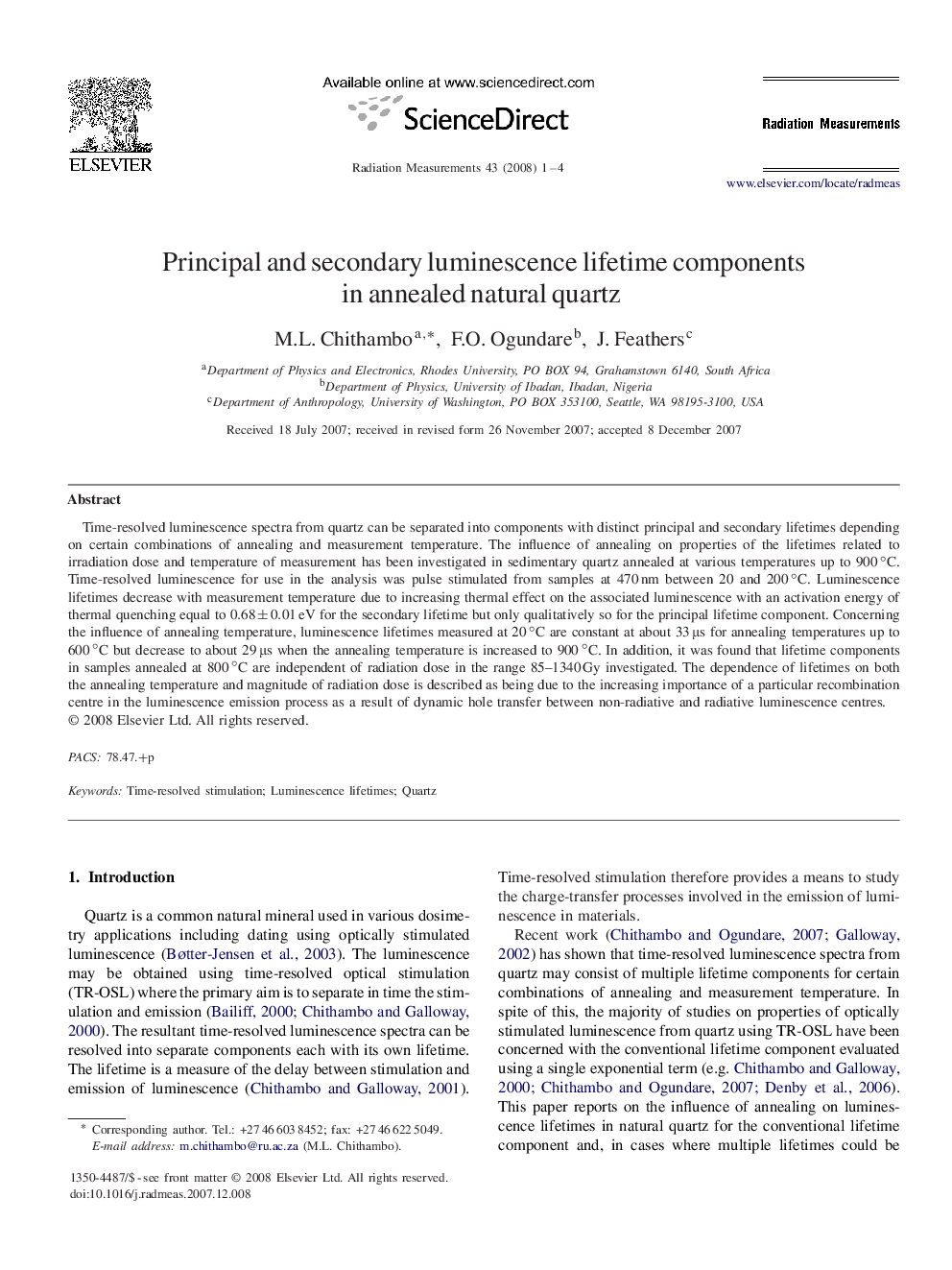| Article ID | Journal | Published Year | Pages | File Type |
|---|---|---|---|---|
| 1884518 | Radiation Measurements | 2008 | 4 Pages |
Time-resolved luminescence spectra from quartz can be separated into components with distinct principal and secondary lifetimes depending on certain combinations of annealing and measurement temperature. The influence of annealing on properties of the lifetimes related to irradiation dose and temperature of measurement has been investigated in sedimentary quartz annealed at various temperatures up to 900∘C. Time-resolved luminescence for use in the analysis was pulse stimulated from samples at 470 nm between 20 and 200∘C. Luminescence lifetimes decrease with measurement temperature due to increasing thermal effect on the associated luminescence with an activation energy of thermal quenching equal to 0.68±0.01eV for the secondary lifetime but only qualitatively so for the principal lifetime component. Concerning the influence of annealing temperature, luminescence lifetimes measured at 20∘C are constant at about 33μs for annealing temperatures up to 600∘C but decrease to about 29μs when the annealing temperature is increased to 900∘C. In addition, it was found that lifetime components in samples annealed at 800∘C are independent of radiation dose in the range 85–1340 Gy investigated. The dependence of lifetimes on both the annealing temperature and magnitude of radiation dose is described as being due to the increasing importance of a particular recombination centre in the luminescence emission process as a result of dynamic hole transfer between non-radiative and radiative luminescence centres.
